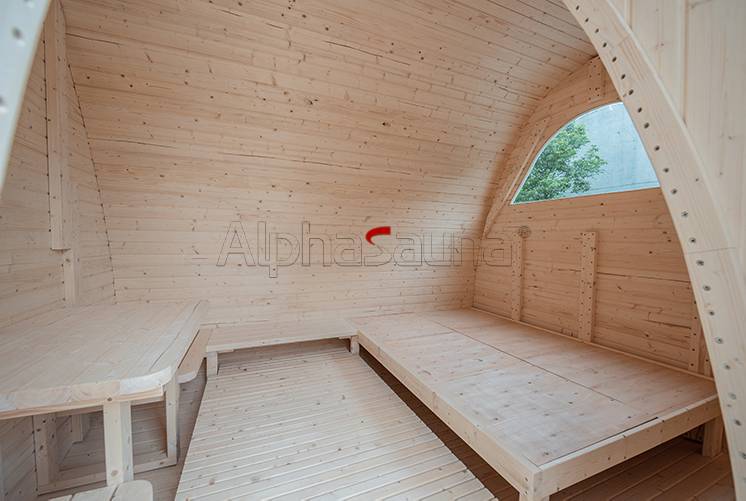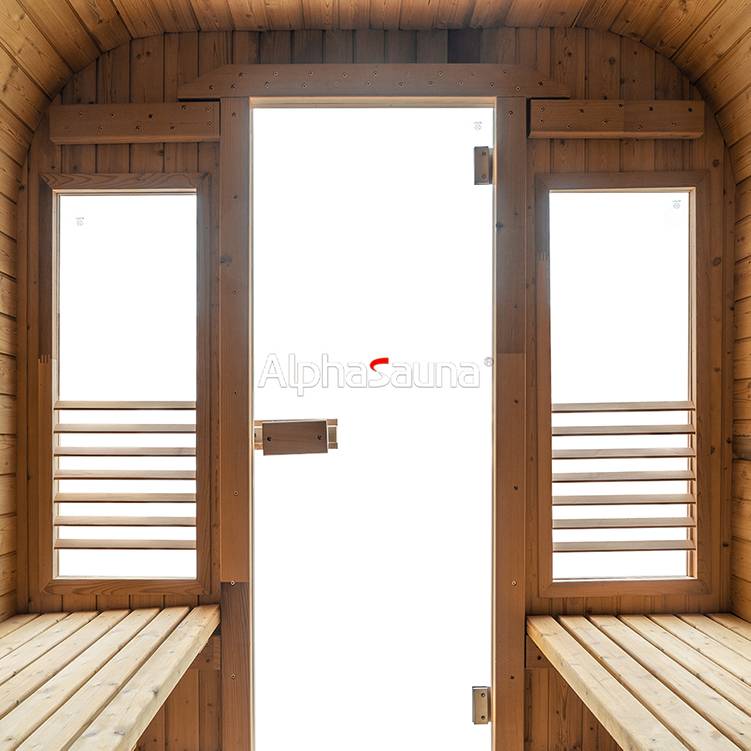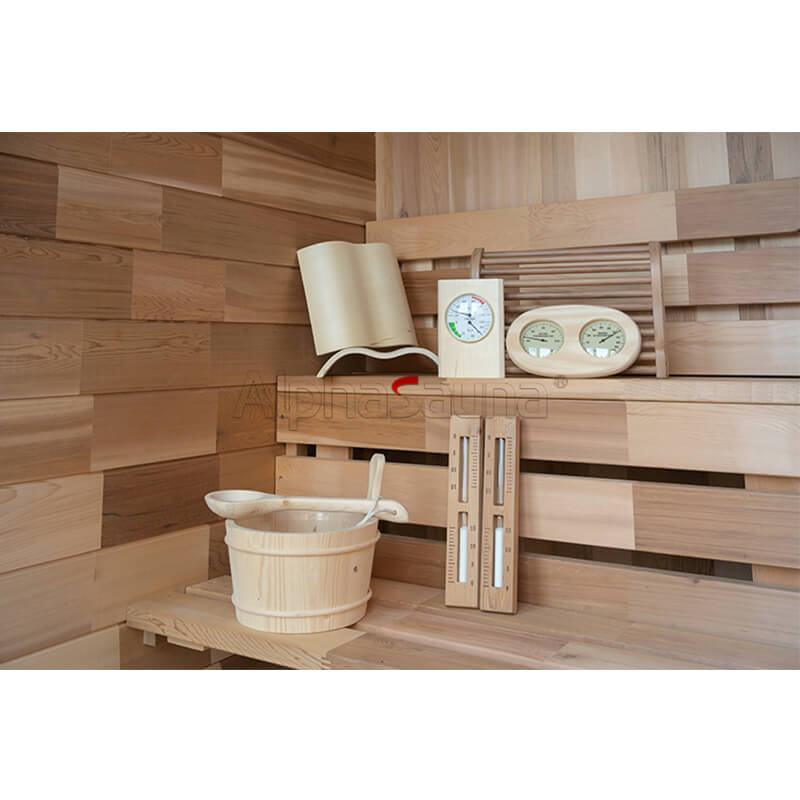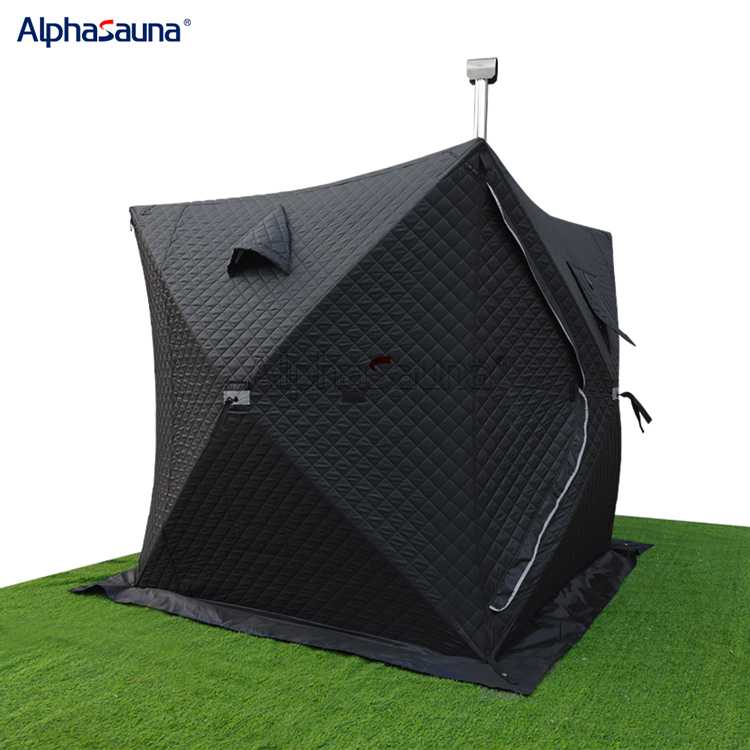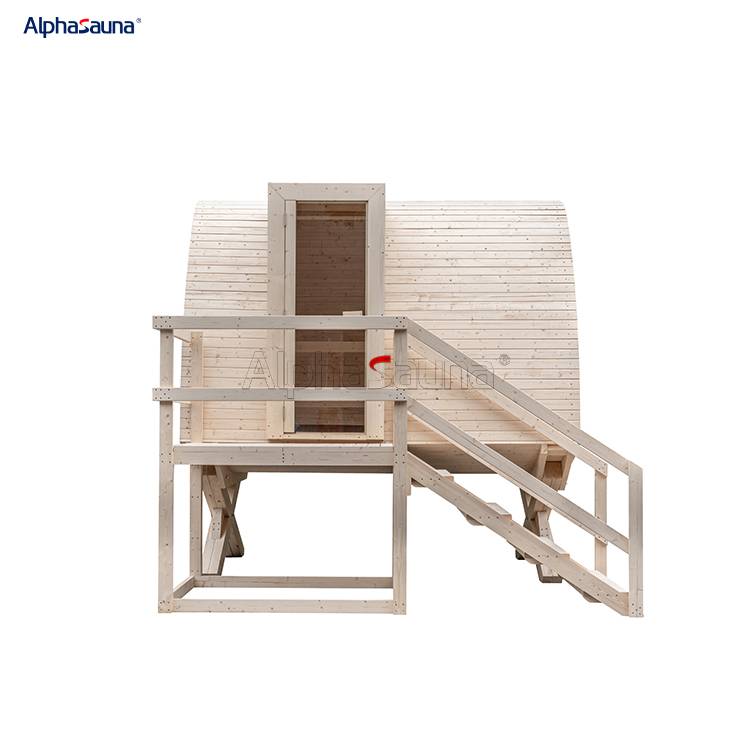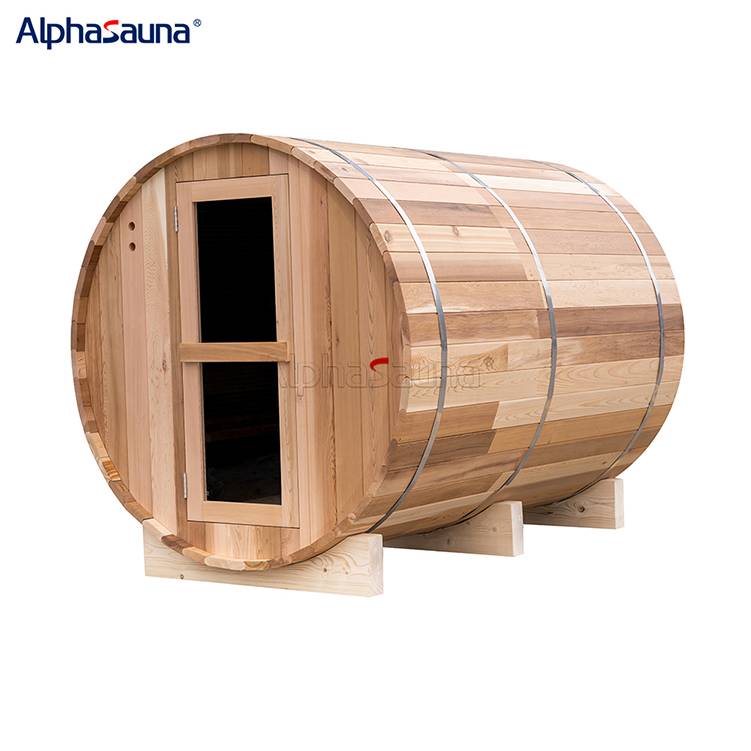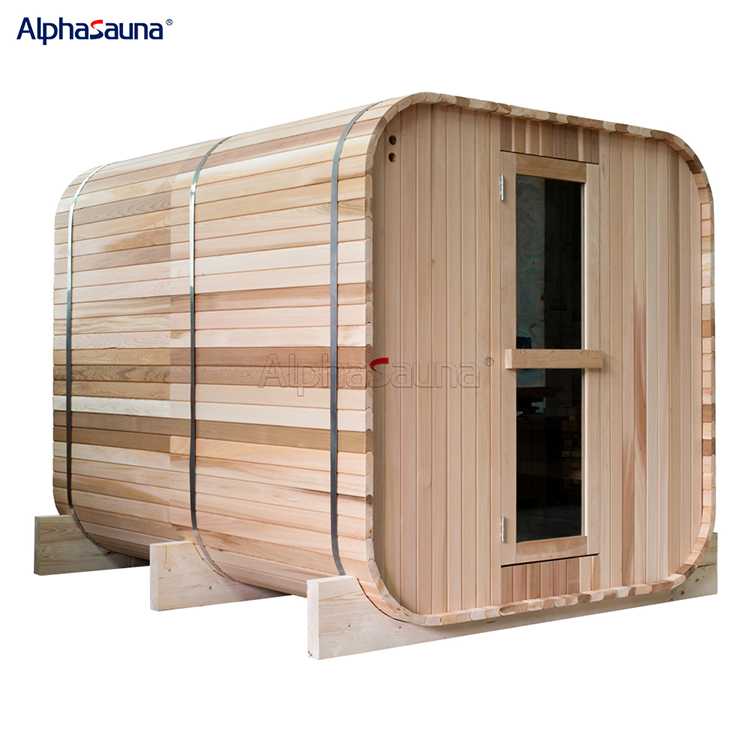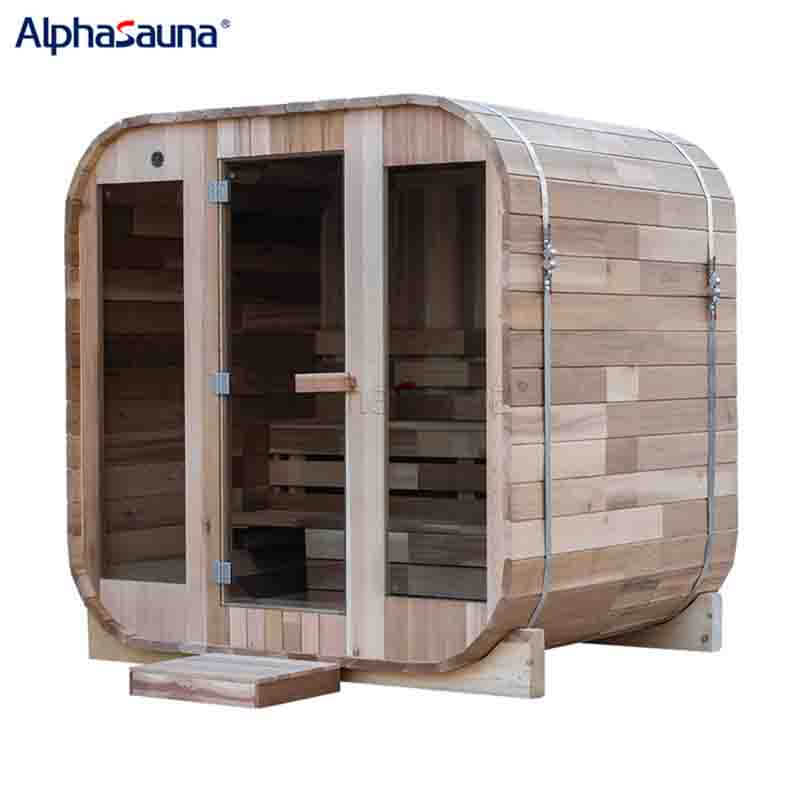ALPHA SAUNA & SWIMMING POOL SUPPLIER CO.,LTD
Must-see sauna cleaning tips
Must-see sauna cleaning tips
Regular cleaning and maintenance of the sauna can effectively prolong its lifespan, enhance hygiene within the sauna, and ensure the safety and effectiveness
of sauna usage. Proper cleaning methods are essential as improper cleaning techniques can potentially damage sauna equipment and hinder its normal
operation. Different types of saunas require different cleaning approaches.
How to clean a portable wood sauna
1. Ensure Cooling: When cleaning the sauna, make sure it's cooled down to prevent damage to the sauna surfaces and potential
damage to cleaning tools due to high temperatures.
2. Remove Attachments: Start by removing detachable accessories like wooden boards and seats to facilitate cleaning of both the
sauna room and the attachments.
3. Surface Cleaning: Begin by using a small brush or vacuum cleaner to remove dust from the sauna room surfaces, then wipe
down the surfaces with a damp cloth.
4. Use Mild Cleaning Agents: Avoid using harsh cleaning agents that may damage the sauna room surfaces and wood. Opt for gentle
cleaners to maintain the integrity of the sauna.
5. Clean Heating Elements: Regularly clean and inspect heating elements to ensure they're free from excessive dust buildup, which can
affect their performance and the sauna experience.
6. Maintain Dryness: After cleaning, remember to ventilate the sauna by opening doors or windows or using a dry cloth to wipe away any
residual moisture to prevent wood damage and bacteria growth.
The above are the cleaning methods for portable wooden saunas. Cleaning methods for wooden saunas are generally similar, although there may
be slight variations due to different heating equipment. Some saunas may be equipped with sauna stoves, infrared heaters, etc., requiring
specific cleaning as per the instructions.
Other types of saunas, such as fiberglass saunas, metal saunas, and combination saunas, may have slightly different cleaning methods. Fiberglass saunas
are easy to clean, but abrasive cleaners or harsh cleaning tools should be avoided to prevent surface damage. Metal saunas, typically made of iron or
stainless steel, should not be cleaned with acidic cleaners to avoid corrosion. Instead, use specialized cleaners for metal saunas and ensure thorough
drying to prevent oxidation. Combination saunas combine different types of saunas, so cleaning should be done according to the specific materials and
structure. Follow the manufacturer's cleaning guidelines to ensure effectiveness and safety.
In summary, different types of saunas may have slight variations in cleaning methods, but all require the use of mild cleaning agents to avoid damage,
proper ventilation after cleaning, and attention to maintaining a dry environment.
How to clean sauna accessories?
Sauna accessories include benches, stones, small sauna buckets, thermometers, hygrometers, headrests, and various other items. Regular cleaning of these
sauna accessories ensures hygiene and enhances the sauna experience. Here are some methods for cleaning sauna accessories:
1. Ensure Cooling: Before cleaning, ensure that the sauna accessories are completely cooled down. It's best to remove the sauna accessories from the sauna
room for cleaning separately, which allows for more effective and convenient cleaning.
2. Surface Cleaning: Use a soft-bristle brush or cloth to remove dust from the surfaces of the sauna accessories, preventing the accumulation of dust and dirt.
3. Use Mild Cleaning Agents: Dilute the cleaning agent and soak a cloth before wiping the surfaces of the sauna accessories. For stones or wooden items,
use a mild cleaning agent or diluted vinegar. For metal accessories, use a mild metal cleaner, avoiding harsh acidic or alkaline cleaners to prevent
damage to the surfaces of the sauna accessories.
4. Wipe Surfaces: Spray a small amount of cleaning agent or alcohol on the surfaces of the sauna accessories for wiping. For stubborn dirt, use a small
brush for cleaning, but avoid using overly hard cleaning tools to prevent surface damage.
5. Thorough Rinse: Thoroughly rinse the sauna accessories with clean water to remove any residues of cleaning agents and dirt.
6. Regular Cleaning and Inspection: Regularly clean and inspect the sauna accessories to ensure their normal use and hygiene, preventing the accumulation
of dirt and bacteria that may have adverse effects on health.
In summary, regular cleaning and maintenance of sauna accessories ensure hygiene, safety, and the effectiveness of the sauna experience, while also
prolonging the lifespan of the sauna accessories.
How to clean a portable tent sauna?
Convenient tent saunas are typically constructed from various materials such as canvas, plastic, metal, etc. Here are some steps for cleaning a convenient tent sauna:
1. Ensure Cooling: Before cleaning, ensure the sauna has cooled down to prevent high temperatures from causing harm to the body or damaging cleaning tools.
2. Remove Debris: Clear out any items from inside the tent sauna, such as benches, cushions, towels, small sauna buckets, headrests, etc., to facilitate cleaning.
3. External Cleaning: Use a cloth or vacuum cleaner to remove dust from the surfaces. Then, clean the surfaces and plastic/metal parts of the sauna with a cleaning
agent or damp cloth to ensure effective cleaning. Avoid using harsh cleaning tools that may damage the surfaces of the sauna.
4. Internal Cleaning: Start by wiping down the surface of the canvas to remove dirt and sweat stains. Use warm water and diluted cleaning agent to clean the metal
parts, ensuring safe and thorough cleaning.
5. Thorough Rinse: Rinse the tent sauna thoroughly with clean water to ensure all cleaning agents and dirt are completely washed away.
6. Maintain Dryness: After cleaning, ventilate the sauna to prevent moisture from damaging the surfaces and bacteria from breeding. Ensure the tent sauna is
completely dry before folding and storing it.
7. Regular Maintenance: Convenient tent saunas also require regular inspection and maintenance. Regular cleaning ensures hygiene and prolongs the lifespan
of the sauna. Determine the frequency of cleaning based on your usage.
In summary, cleaning a convenient tent sauna is relatively straightforward compared to other types of saunas. The tent sauna's disassembly and easy assembly
features, along with the absence of auxiliary heaters, simplify the cleaning process.
what type of wood is used in saunas?
Saunas come in various types, with wooden saunas being the most common. There are many types of wooden saunas, and here are some commonly used woods for building saunas:
1. Red Pine: Red pine has natural corrosion resistance and antibacterial properties, making it stable and durable in high-temperature and high-humidity
environments like saunas. It can withstand and adapt to the sauna's conditions well. Red pine also emits a special aroma that enhances the sauna experience.
2. Birch: Birch wood possesses natural antibacterial properties and durability, reducing bacterial growth in the sauna and extending its lifespan. With its light
color and clear grain, birch wood visually relaxes people, creating a natural ambiance.
3. Cedar: Cedar wood offers good durability, antibacterial properties, and stability, enhancing the sauna's longevity and adapting to its high-temperature and
high-humidity environment. Cedar also emits a subtle, pleasant fragrance, adding to the sauna's comfort. Cedar wood comes in various shades from light yellow
to deep reddish-brown, with many patterns and textures, making it a popular choice for sauna construction.
4. Cedar: Cedar wood also provides good durability, antibacterial properties, and stability, inhibiting bacterial growth. As a renewable resource, cedar wood is
environmentally friendly and widely used in saunas, homes, and other constructions. Cedar wood is relatively light compared to other woods,
making it easy to work with and transport.
5. Hemlock: Hemlock wood offers stability, durability, eco-friendliness, and ease of processing at
A relatively lower price, making it widely applied.
Saunas typically utilize woods such as red pine, birch, cedar, hemlock, and cedar. Different types of woods have different characteristics, which can result in
subtle differences in sauna effects and experiences. The choice of wood for the sauna also affects its price, so personal preferences and budget considerations
should be taken into account when selecting the wood type for the sauna.
Alphasauna’s sauna room
Alpha Saunas' wooden saunas are typically constructed from hemlock, pine, cedar, and heat-treated wood. We choose high-quality wood to provide users with
a better sauna environment and experience. Our saunas are guaranteed in quality, affordable in price, and some products can even be customized to meet your needs.
Come and purchase your exclusive sauna today!

